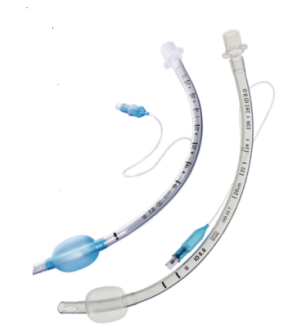Tianjin Honray Science and Technology Co., Ltd
Understanding Endotracheal Tube Connectors: Essential Components in Respiratory Care
Nov 12,2025
In the field of respiratory care, endotracheal tube connectors (ETC) are vital components that facilitate the connection between an endotracheal tube and various medical devices, such as ventilators and suction systems. These connectors are essential for ensuring that air delivery and suctioning can be performed effectively and safely. Understanding the types and functionalities of endotracheal tu

Endotracheal tube connectors come in various designs and materials, but they generally share a few common features. They are designed to fit snugly onto the endotracheal tube, which is inserted into the patient’s trachea to maintain an open airway. A well-designed connector ensures minimal air leakage, which is critical for patient ventilation. There are two primary types of connectors: standard connectors and swivel connectors. Standard connectors provide a fixed connection, while swivel connectors allow for enhanced mobility, reducing tension on the tube and minimizing the risk of accidental extubation.
When selecting endotracheal tube connectors, it is important to consider compatibility with the specific endotracheal tube being used, as well as with the medical equipment involved. Most connectors are designed to be compatible with various tube sizes, but healthcare providers should verify this to avoid complications. Additionally, the material of the connector plays a significant role in its performance. Common materials include polyvinyl chloride (PVC) and polyethylene, which offer different levels of flexibility, durability, and resistance to chemical agents.
In the context of infection control and patient safety, the design of endotracheal tube connectors has evolved significantly. Many modern connectors incorporate features that minimize the risk of contamination, such as antimicrobial coatings or designs that reduce the accumulation of secretions. This is particularly important in critical care settings, where patients are often vulnerable to infections.
Another consideration is the ease of cleaning and sterilization of connectors, especially in environments where infection control protocols are paramount. Healthcare professionals should be trained on the proper handling and maintenance of these connectors to ensure optimal performance and patient safety.
In summary, endotracheal tube connectors are critical components in respiratory care, playing a pivotal role in patient management during ventilation and airway management. Understanding their types, compatibility, materials, and infection control features is essential for healthcare professionals. By selecting appropriate connectors and adhering to best practices, practitioners can enhance patient outcomes and ensure the effectiveness of respiratory interventions.
PREVIOUS:
Contact Us
E-mail :
sales@jm-intl.com
Phone/WhatsApp:
+86 15201315855
Address:
Room 7-8, 9-1013, Building 13, Kangsheng Plaza, East of Guangxian Road, Xiazhuzhuang Sub-district, Wuqing District, Tianjin City










